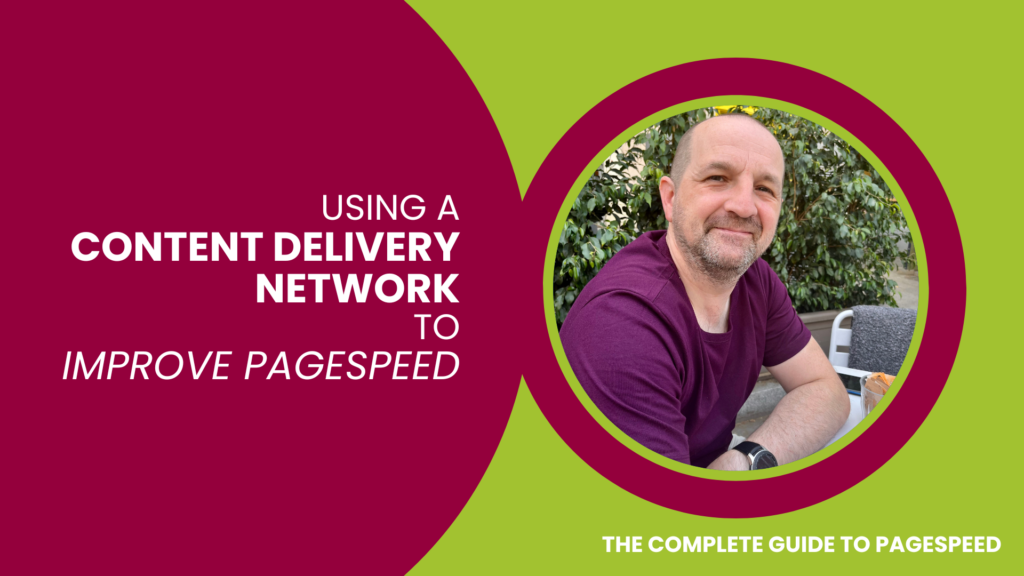Content Delivery Networks: The Basics
A CDN, or Content Delivery Network, is a network of servers that helps deliver your website content to your visitors more quickly and efficiently, much like how having multiple warehouses can help you deliver your products more quickly to visitors all over the world.
A CDN is like having multiple warehouses for a business located in different parts of the world. Just like you might have a warehouse in the UK, another in France and another in Spain to help you deliver your products quickly to your customers all over Europe, a CDN is a network of servers spread across different geographic locations that work together to deliver your website content to your visitors more quickly and efficiently.
When a user visits your website, their browser requests your website’s content (like images, videos, text, etc.) from your server, which is where your website is hosted. With a CDN, instead of the browser requesting the content from your server directly, it requests the content from the CDN server that is geographically closest to the visitor. That CDN server then delivers the content to the visitor’s browser.
This means that if someone in Madrid visits your website and someone in London visits your website at the same time, they won’t have to wait as long for your website to load because the content will be delivered from the server that’s closest to them.
Additionally, if your website experiences a sudden surge in traffic (like during a sale or promotion), a CDN can help your website handle the traffic by distributing the load across multiple servers automatically, without any intervention from you or your Web Host.
How a Content Delivery Network Improves Page Speed
A CDN improves page speed in a number of ways:
- Caching: When a user visits a website, the CDN caches (or stores) the website’s static content (like images, videos, and JavaScript files) on servers located around the world. When another user visits the same website, the CDN can serve the cached content from a server that is geographically closer to them, which reduces the amount of time it takes for the content to load. (Related: How to Use Caching to Optimise Page Speed)
- Reducing Server Load: Because the CDN serves cached content, it can reduce the load on the origin server (where the website is hosted) by serving the content from its own servers. This can help the origin server respond more quickly to requests for dynamic content, like database-driven content or personalised content, which can further improve page load times.
- Geographical Proximity: A CDN can deliver content from servers that are closer to the user, reducing the distance the content needs to travel and therefore reducing the time it takes to load. This is particularly important for international websites or websites with a global audience.
- Load Balancing: A CDN can also distribute incoming traffic across multiple servers to balance the load, reducing the risk of overloading a single server and improving overall page speed.
Risks of Using a CDN
While CDNs offer many benefits for website performance and user experience, it’s important to carefully evaluate the potential risks and downsides and choose a provider that meets a website’s specific needs and requirements.
- Cost: CDNs can be expensive, particularly for smaller websites or businesses with lower traffic volumes. Some CDNs charge based on bandwidth usage, which can be difficult to predict and manage, especially if traffic spikes unexpectedly.
- Complexity: Implementing a CDN can be a complex process, particularly for less technical users. It often involves modifying DNS settings, configuring caching rules, and ensuring that content is being delivered correctly. This can be time-consuming and may require technical expertise.
- Security Risks: A CDN can introduce additional security risks, particularly if the CDN provider is not properly configured or secured. A compromised CDN can potentially distribute malicious content to website visitors or expose sensitive data.
- Dependency: Relying on a third-party CDN provider means that a website’s performance and availability are partially dependent on the provider’s infrastructure and performance. If the provider experiences an outage or performance issues, it can affect a website’s performance.
- Data Privacy: A CDN provider may be able to see and collect data about a website’s traffic, which could raise privacy concerns for some users. It’s important to choose a CDN provider that has strong data privacy policies and practices.
Related:
This post is part of: Page Speed Optimisation: A Complete Guide — created by our Page Speed Optimisation Specialists.
In this series:







